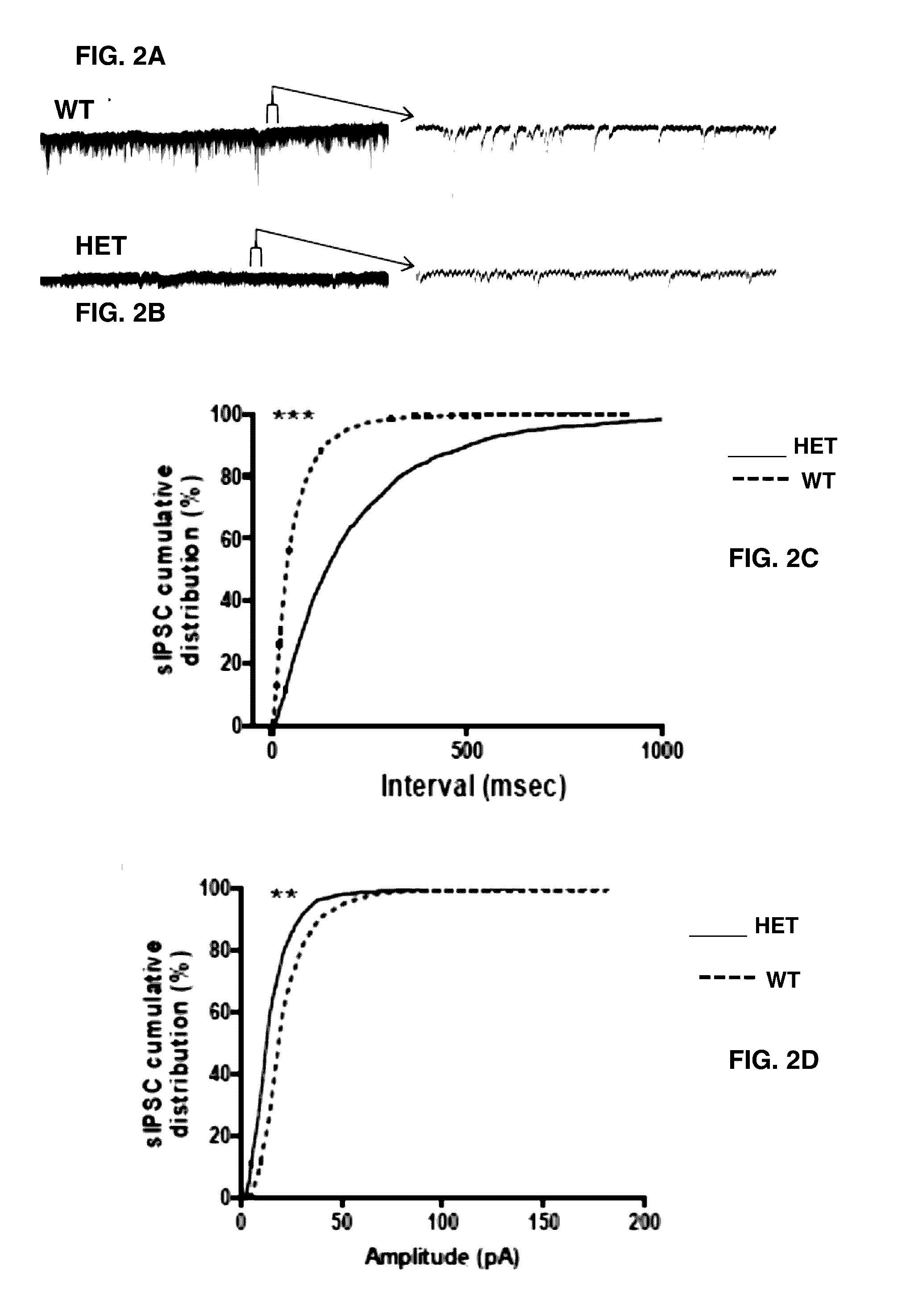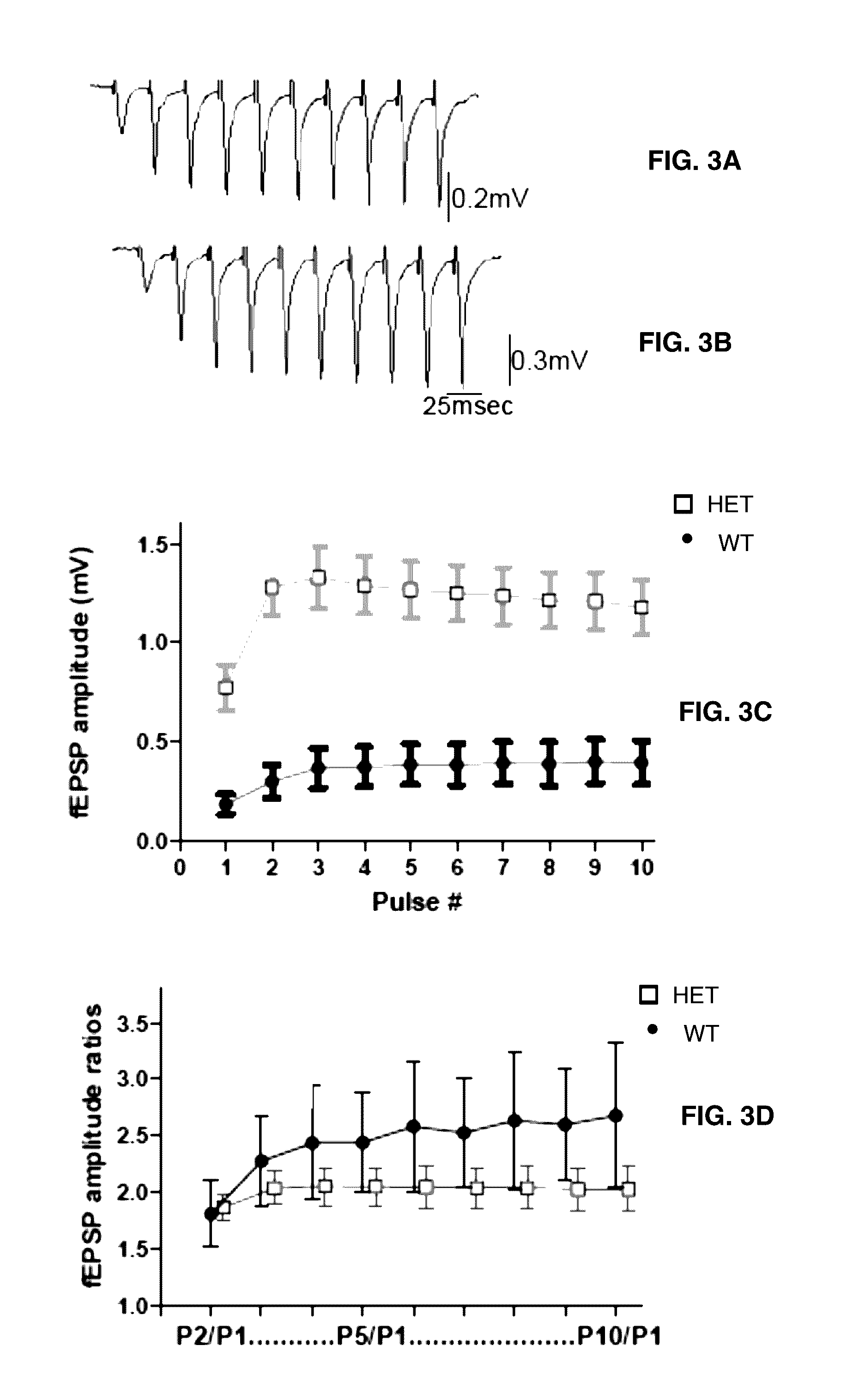Methods of Treating Neurological Diseases
a neurological disease and method technology, applied in the field of neurological diseases, can solve the problems of lack of effective neurological treatment, lack of application of approaches, and inability to study the neural circuits mediating pathophysiology in msmei, and achieve the effects of restoring excitatory/inhibitory (e/i) balance and blocking epileptogenetic activities
- Summary
- Abstract
- Description
- Claims
- Application Information
AI Technical Summary
Benefits of technology
Problems solved by technology
Method used
Image
Examples
example 1
Animals
[0056]The model of SMEI used in these studies is caused by a knock-in nonsense substitution (CgG to TgA in exon 21) made within a loop between segments 5 and 6. Transgenic mice were provided by Drs. K. Yamakawa and I. Ogiwara (RIKEN, Japan (14)). All of the experiments on the mice (C57BL / 6 / 129) involved in this project were performed in accordance with animal protocols approved by the Institutional Animal Care and Use Committee of the University of Houston. Heterozygous (HET) and wild-type (WT) mice were used.
example 2
[0057]Mice (P16-22) were anesthetized with isofluorane, decapitated, and the brains immediately removed. Transverse hippocampal sections (350 μm thickness) were cut in cold dissection solution (in mM: 2.6 KCl, 1.23 NaH2PO4, 24 NaHCO3, 0.1 CaCl2, 2 MgCl2, 205 sucrose, and 10 glucose) using a vibratome and were incubated for half an hour in normal artificial cerebrospinal fluid (ACSF; pH 7.3, 30° C.) containing (in mM) 130 NaCl, 1.2 MgSO4, 3.5 KCl, 1.2 CaCl2, 10 glucose, 2.5 NaH2PO4, 24 NaHCO3 aerated with 95% O2-5% CO2. After the incubation, slices were stained with Di-4ANNEPS (final dye concentration is 0.05 mg / ml) and left to recover for an additional hour at 30° C. (23). The slices were transferred to a submersion recording chamber (Warner Instr.) and continuously perfused (2 ml / min, at 30° C.) with the oxygenated ACSF.
example 3
Optical Imaging and Electrical Recordings
[0058]A combination of in vitro electrophysiology (extracellular field potential recording and whole-cell patch clamp recordings) and fast voltage-sensitive dye imaging (VSDI) was used. All electrical recordings were performed using MCC 700 amplifiers (Axon Instruments). Electrical data was acquired at 4 KHz, digitized at 10 KHz using a Digidata DAC board and pClamp software. Optical data were recorded at 250 Hz with MiCam 02 (192×126 pixels, SciMedia USA).
[0059]For electrical whole-cell voltage-clamp recordings, borosilicate glass micropipettes (4-7 MΩ) were used containing (in mM): 116 Cesium gluconate, 6 KCl, 0.5 EGTA, 20 HEPES, 10 phosphocreatine, 0.3 NaGTP, 2 NaCl, 4 MgATP, and 0.3% Neurobiotin (pH 7.25, 295 mOsm) and 5 mM QX-314 (fast voltage-gated conductance blocker). Spontaneous inhibitory postsynaptic currents (IPSCs) and EPSCs were recorded in CA1 pyramidal cells. sIPSCs were recorded at −80 mV in the presence of APV (100 μM) and C...
PUM
 Login to View More
Login to View More Abstract
Description
Claims
Application Information
 Login to View More
Login to View More - R&D
- Intellectual Property
- Life Sciences
- Materials
- Tech Scout
- Unparalleled Data Quality
- Higher Quality Content
- 60% Fewer Hallucinations
Browse by: Latest US Patents, China's latest patents, Technical Efficacy Thesaurus, Application Domain, Technology Topic, Popular Technical Reports.
© 2025 PatSnap. All rights reserved.Legal|Privacy policy|Modern Slavery Act Transparency Statement|Sitemap|About US| Contact US: help@patsnap.com



